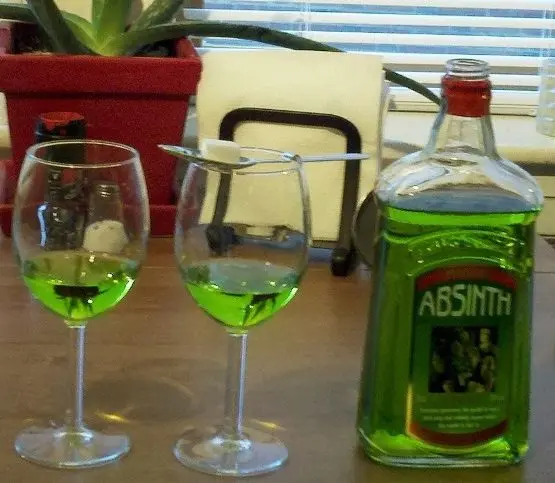The word “Maktub” in Arabic means “so it is destined.” In this expression – both humility to fate, and confidence that higher powers have already outlined for you a path from which you cannot turn. A beautiful bottle, a mysterious name, a stylized oriental design on the label – all this is enough to intrigue a wormwood lover. And since the contents of the Maktub absinthe bottle are as beautiful as the design, the number of admirers of the drink is growing every day.
In the early 20s, Fruko Schulz’s blenders created an unusual sort of absinthe. There was almost no taste of anise in its taste. Moderate bitterness was softened by minty shades to such an extent that a 70-degree drink could be drunk without diluting.
At that time, it was believed that absinthe was able to inspire, cause creative insight. The name Maktub hinted that thanks to this drink, a person will gain the ability to see the fate prepared for him.
Fruko Schulz was founded in 1898 by Austrian businessman Moritz Schulz. The distillery in Jindrichuv Hradec produced excellent fruit wines and liqueurs that were sold throughout the former Austro-Hungarian Empire. Unlike most European countries, there was no ban on the production of absinthe in the Czech Republic, so the company’s blenders freely honed their skills until the Second World War.
In 1948, the distillery was nationalized, but in 1993 it was returned to the heirs of Moritz Schulz. Then it was time to recall the pre-war recipes that brought the company well-deserved fame, including the once popular Maktub absinthe. True, the recipe for the drink was slightly changed, significantly reducing the concentration of thujone: now its content in Maktuba is only 10 mg per liter.
Since 2007, Fruko Schulz has been part of the Russian concern Ladoga. Large investments made it possible to modernize production. The products of the factory in Jindrichuv Hradec are exported to many countries. Fruko Schulz currently controls 95% of Taiwan’s absinthe market.

Types of absinthe Maktub
Three varieties of Maktub absinthe are produced with a strength of 70%:
- Green is an emerald green absinthe with a spicy-wormwood aroma. The taste is dominated by notes of wormwood and marjoram, followed by minty coolness in the aftertaste;
- Red – red absinthe, the color of which is given by pomegranate extract. The drink smells of wormwood and spicy herbs, the taste harmoniously combines the bitterness of wormwood, the sourness of pomegranate and mint freshness;
- Black – black absinthe with the smell of wormwood. The taste of the drink is delicate, the bitterness of wormwood is smoothed out by hints of mint and lemon balm.









